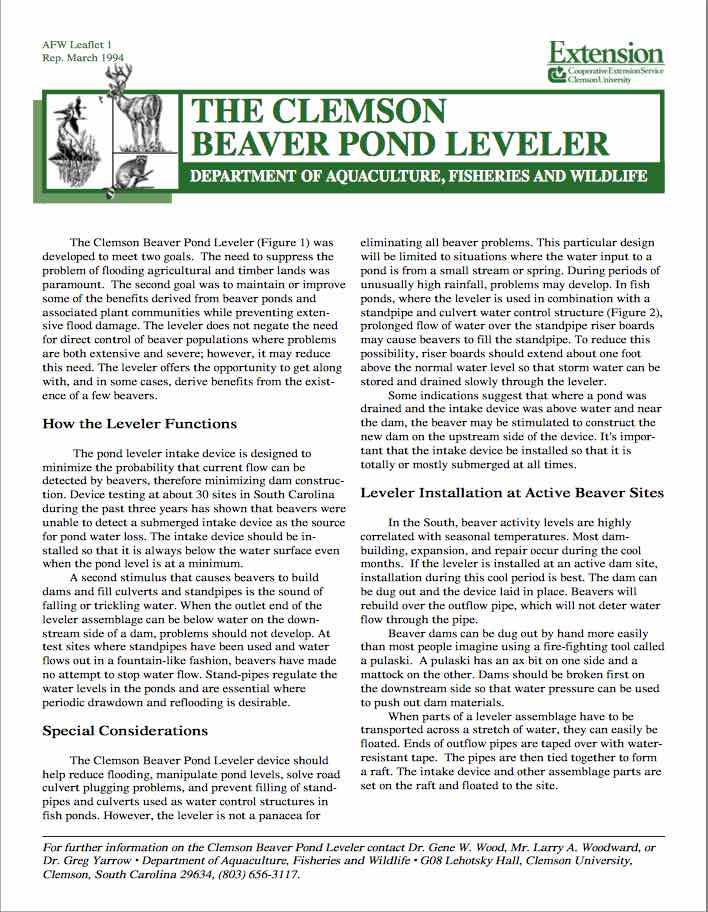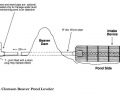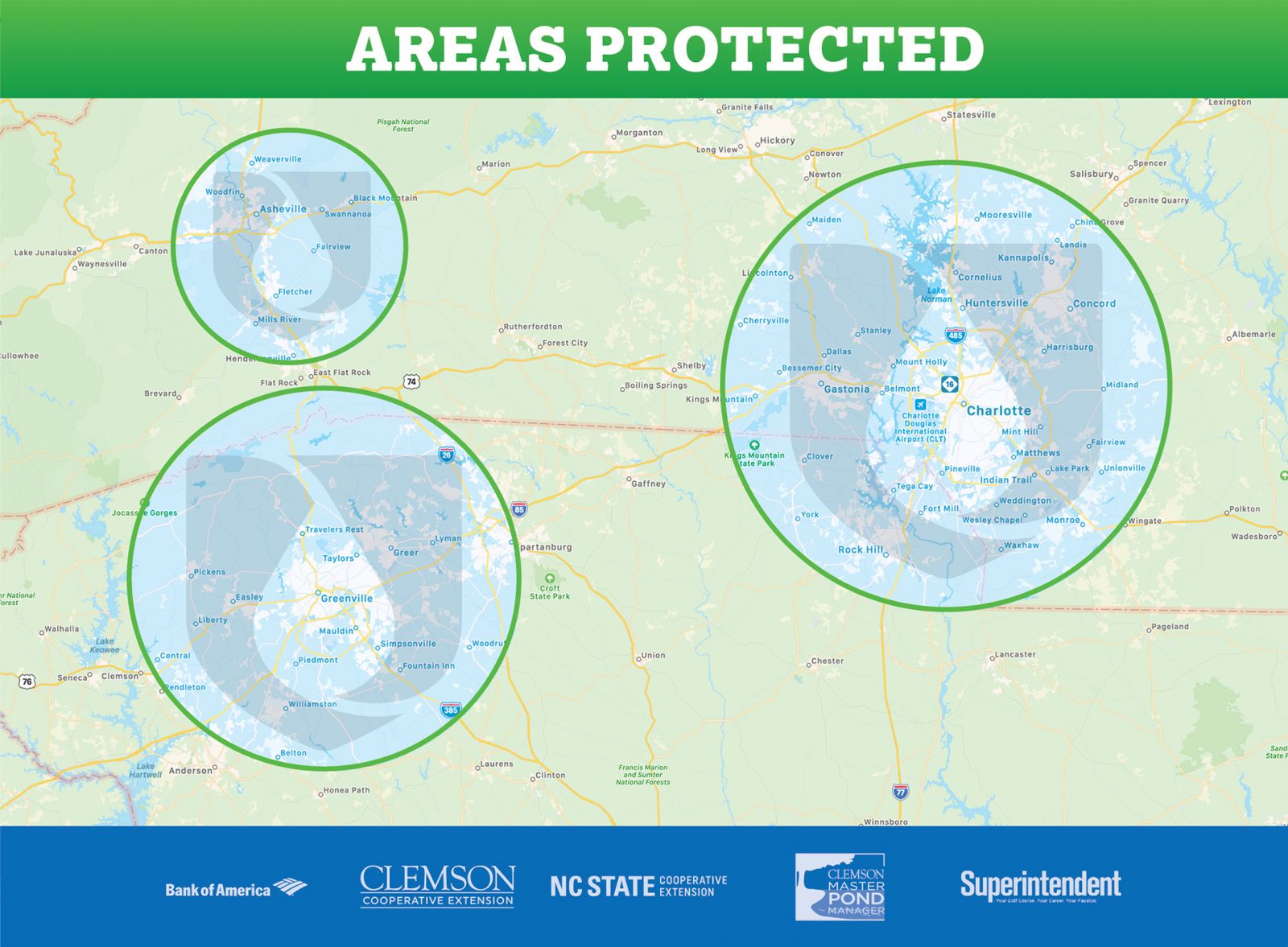The Clemson Beaver Pond Leveler (Figure 1) was developed to meet two goals. The need to suppress the problem of flooding agricultural and timber lands was paramount. The second goal was to maintain or improve some of the benefits derived from beaver ponds and associated plant communities while preventing extensive flood damage.
The leveler does not negate the need for direct control of beaver populations where problems are both extensive and severe; however, it may reduce this need. The leveler offers the opportunity to get along with, and in some cases, derive benefits from the existence of a few beavers.
How the Leveler Functions
The pond leveler intake device is designed to minimize the probability that current flow can be detected by beavers, therefore reducing dam construction. Device testing at about 30 sites in South Carolina during the past three years has shown that beavers were unable to detect a submerged intake device as the source for pond water loss.
The intake device should be in- stalled so that it is always below the water surface even when the pond level is at a minimum.
A second stimulus that causes beavers to build dams and fill culverts and standpipes is the sound of falling or trickling water. When the outlet end of the leveler assemblage can be below water on the down- stream side of a dam, problems should not develop.
At test sites where standpipes have been used, and water flows out in a fountain-like fashion, beavers have made no attempt to stop water flow. Stand-pipes regulate the water levels in the ponds and are essential where periodic drawdown and reflooding is desirable.
The Clemson Beaver Pond Leveler device should help reduce flooding, manipulate pond levels, solve road culvert plugging problems, and prevent filling of stand- pipes and culverts used as water control structures in fish ponds.
However, the leveler is not a panacea for eliminating all beaver problems. This particular design will be limited to situations where the water input to a pond is a small stream or spring. During periods of unusually high rainfall, problems may develop.
In fish ponds, where the leveler is used in combination with a standpipe and culvert water control structure (Figure 2), prolonged flow of water over the standpipe riser boards may cause beavers to fill the standpipe. To reduce this possibility, riser boards should extend about one foot above the normal water level so that storm water can be stored and drained slowly through the leveler.
Some indications suggest that where a pond was drained and the intake device was above water and near the dam, the beaver may be stimulated to construct the new dam on the upstream side of the device. It’s important that the intake device is installed so that it is totally or mostly submerged at all times.
Leveler Installation at Active Beaver Sites
In the South, beaver activity levels are highly correlated with seasonal temperatures. Most dam- building, expansion, and repair occur during the cool months. If the leveler is installed at an active dam site, installation during this cool period is best. The dam can be dug out and the device laid in place. Beavers will rebuild over the outflow pipe, which will not deter water flow through the pipe.
Beaver dams can be dug out by hand more easily than most people imagine using a fire-fighting tool called a Pulaski. A Pulaski has an ax bit on one side and a mattock on the other. Dams should be broken first on the downstream side so that water pressure can be used to push out dam materials.
When parts of a leveler assemblage have to be transported across a stretch of water, they can easily be floated. Ends of outflow pipes are taped over with water- resistant tape. The pipes are then tied together to form a raft. The intake device and other assemblage parts are set on the raft and floated to the site. Read More Here
Now serving Greenville SC, Spartanburg SC, Asheville NC, Charlotte NC, Winston-Salem NC, & Greensboro NC areas.
Get started. Become a member today!




